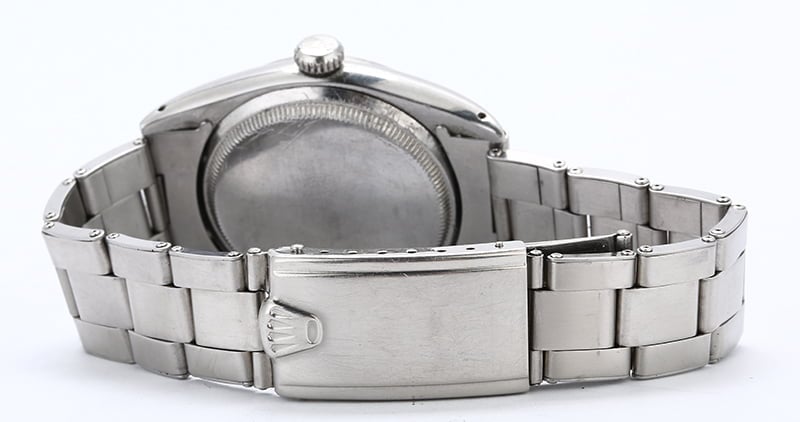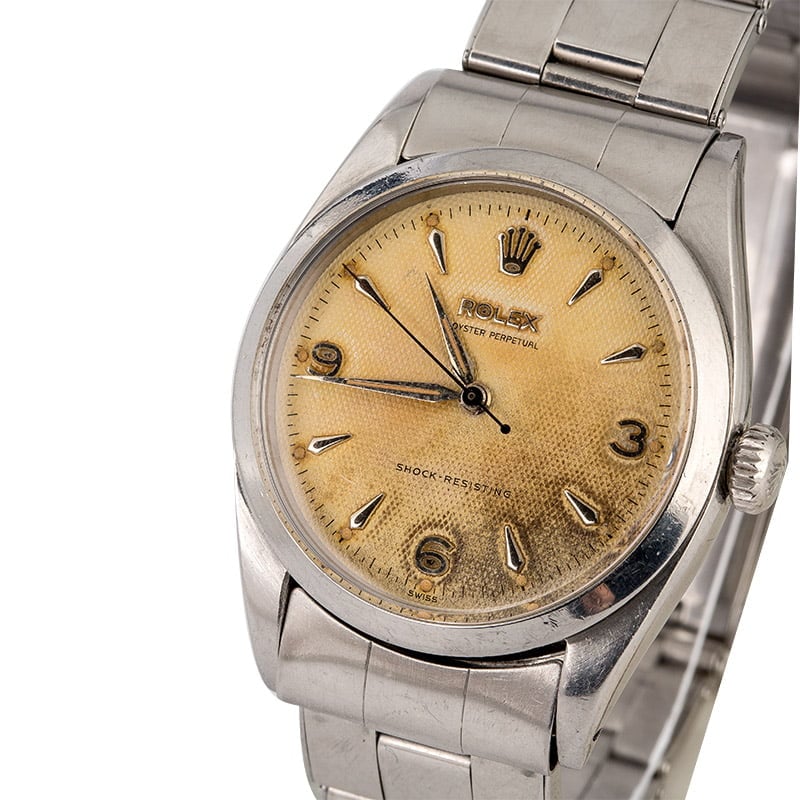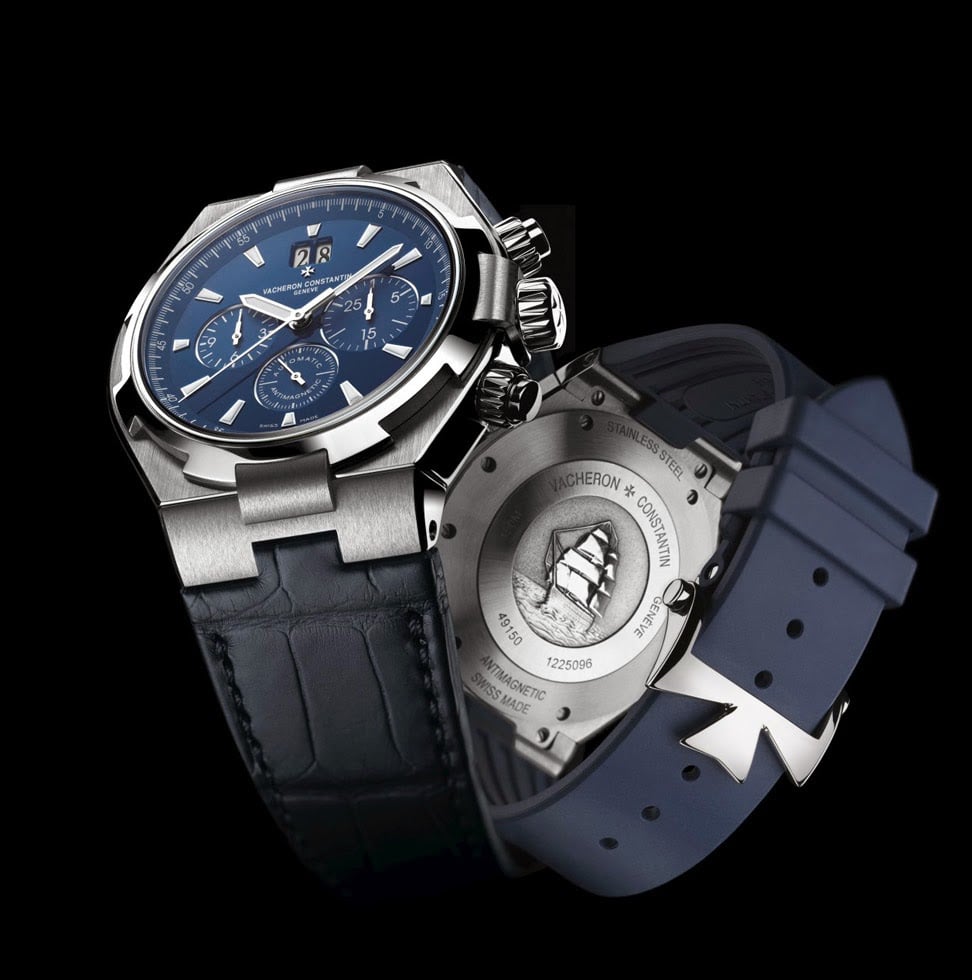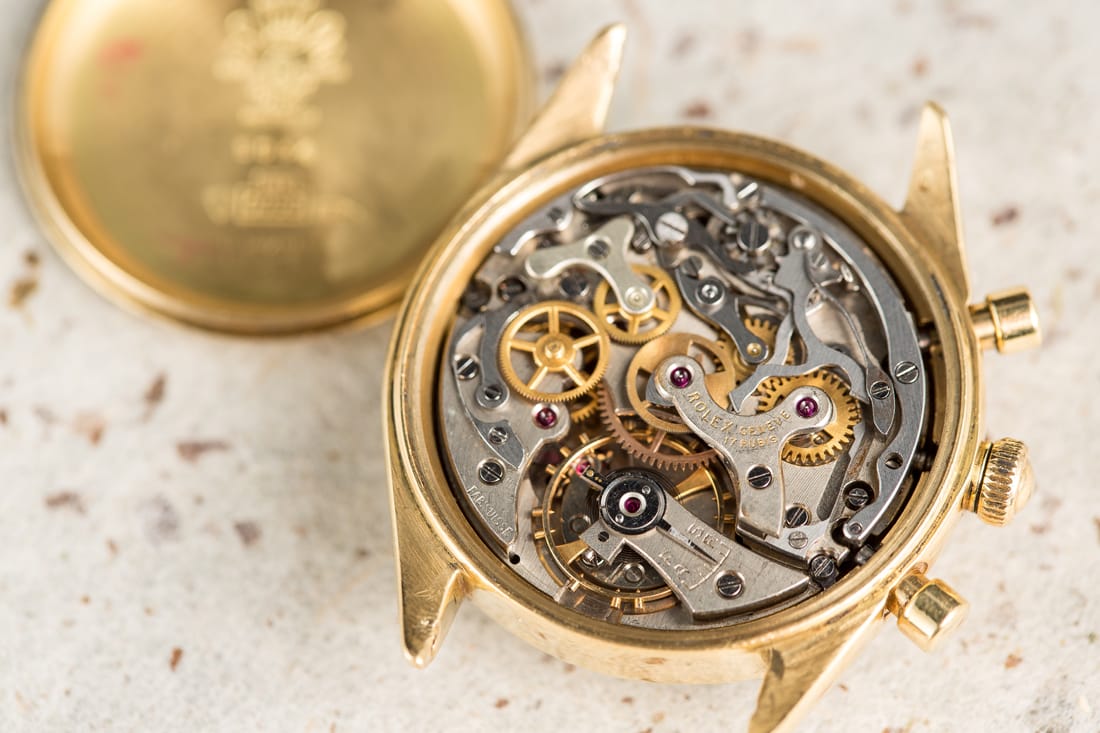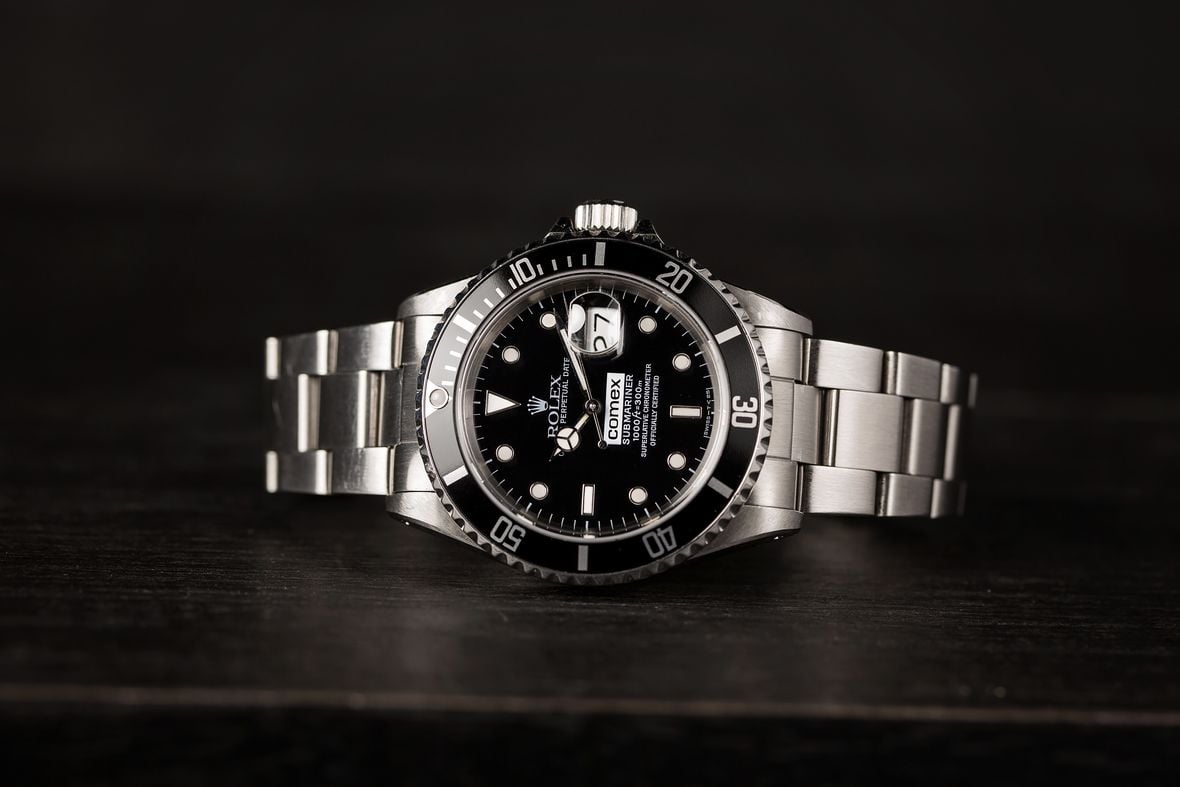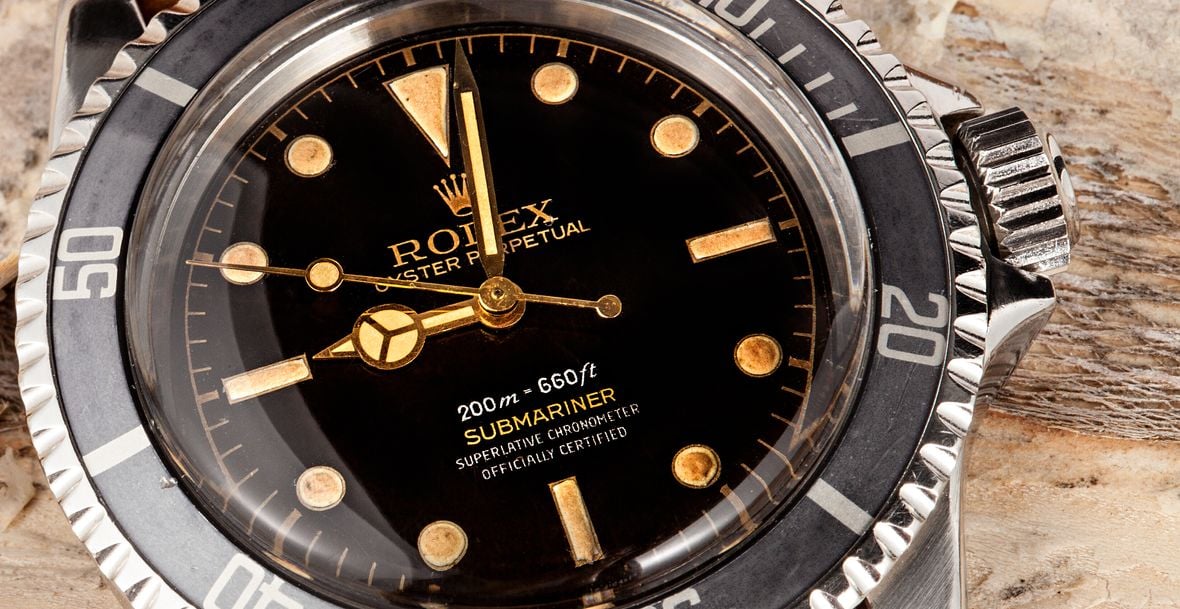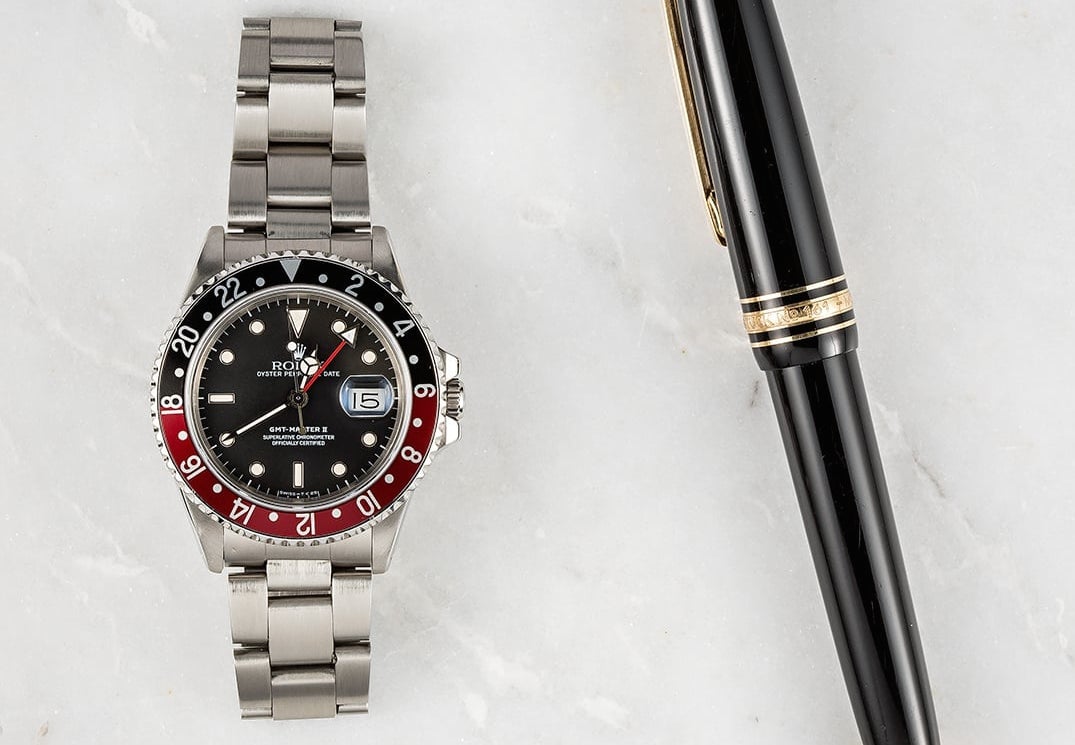When studying vintage Rolex watches, there are always a few pieces that will make you pause. Take this model for example. It has the Explorer-style 3/6/9 dial layout but it is not an Explorer. Its serial number dates it to about 1957, so it is not technically a pre-Explorer either since the Rolex Explorer made its debut four years earlier in 1953. So what is it? Let’s find out a little more about the vintage Rolex Oyster Perpetual 6298.
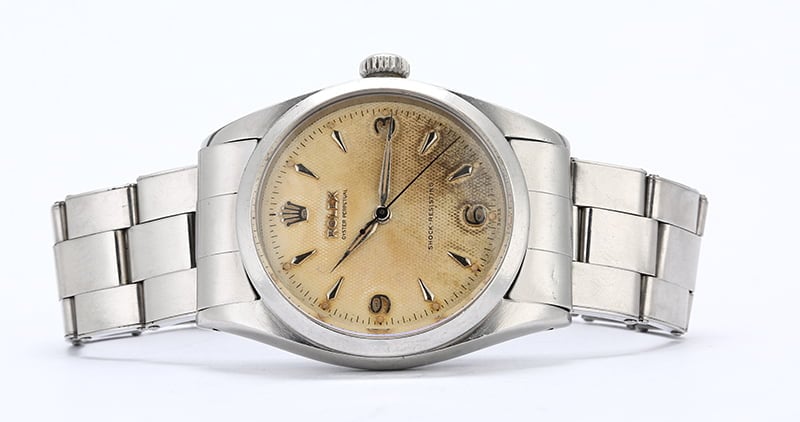
The Era of Vintage Oyster Perpetual and Explorer Watches
As you can imagine, the Rolex of today and the Rolex of the mid-20th century are completely different entities in regards to standardization and manufacturing processes. The current Rolex is incredibly organized and experienced, while the 1950’s Rolex was young and experimental.
Consequently, it is somewhat common to see different designs across vintage Rolex models that share the same name and/or reference number. As a youngish company, Rolex was basically trying to figure out what watches would resonate with the public. Also, don’t forget that Rolex outsourced dials (and other components) from different dial makers so design variety is inevitable.
Essentially, the major difference between the Oyster Perpetual watches and Explorer watches made in the mid-1950s was the “EXPLORER” text on the dial. After all, Rolex pushed the Explorer as its own collection only after Edmund Hillary and Tenzing Norgay’s historic ascent to the top of Mount Everest in 1953.
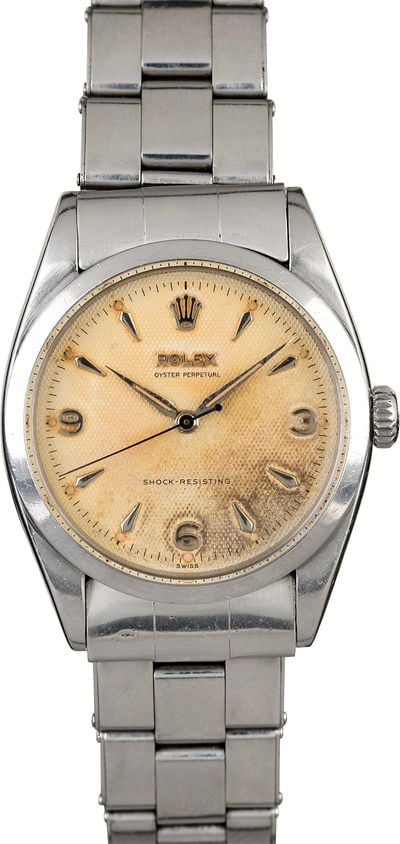
Vintage Rolex Oyster Perpetual 6298
This vintage Rolex Oyster Perpetual 6298 sports a 36mm steel case with a protruding caseback – sometimes called a “bubble back” within Rolex collecting circles. The convex shape of the caseback was necessary to accommodate the winding rotor of the Caliber A296 automatic movement inside the watch.
This particular dial for the Oyster Perpetual 6298 has many intriguing details to consider. First, there’s the lovely honeycomb pattern on the light colored surface.
Then there are 3, 6, and 9 Arabic numerals, which of course, later became a signature design trait of the Explorer collection. In fact, this type of dial is referred to as an Explorer-style dial, even when it is found on other models such as the Submariner, Oyster Perpetual, or Air-King.
Accompanying the numerals are dagger-shaped indexes – something we do not see on Rolex watches anymore. Plus, there are the sword-shaped hands, again a style that Rolex no longer uses.
Adjacent to the hour markers are small luminescent plots to ensure that the watch was legible in the dark. Radium would have been used as the luminous material during this era. Also note the “SHOCK RESISTING” text on the dial, which clearly illustrates Rolex’s desire to highlight the robustness of their watches.
Completing the face of the watch are the applied crown logo at 12 o’clock and the ROLEX name right under it. All of these details come together for a handsome dial for the Oyster Perpetual. I have even seen this particular watch referred to as the “dress version of the Explorer watch.”
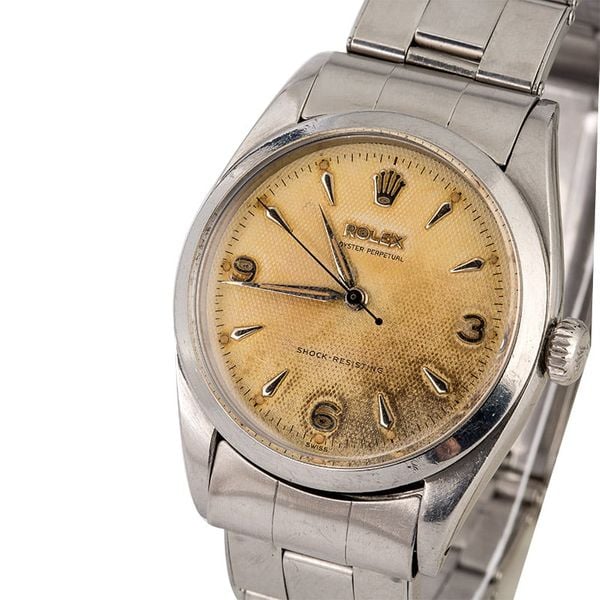
Due to the watch’s age (over 62 years at this point), the dial has developed a strong patina. The lume has turned to a dark creamy hue while certain parts of the dial have darkened considerably – the hallmark of an honest vintage watch.
For fans of vintage Rolex watches, the Oyster Perpetual reference 6298 is an interesting piece that hails from an era when the company was still establishing the design codes of their collections. Not only does it have a cool backstory but with a highly-versatile case size, it is also entirely wearable.
